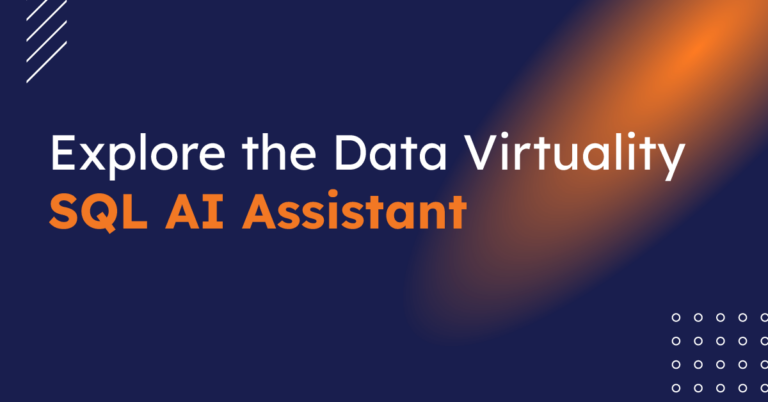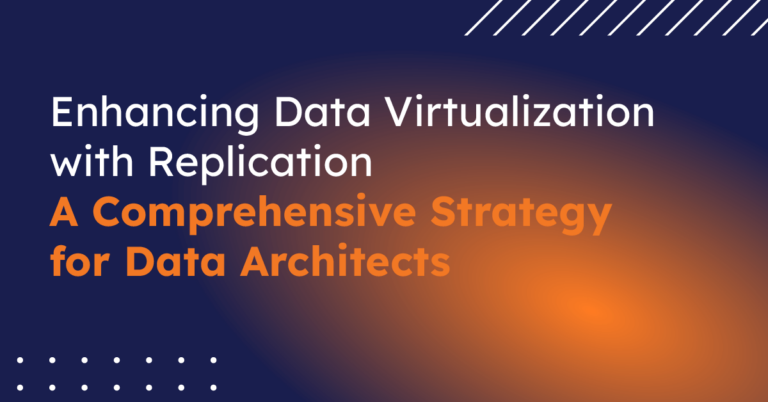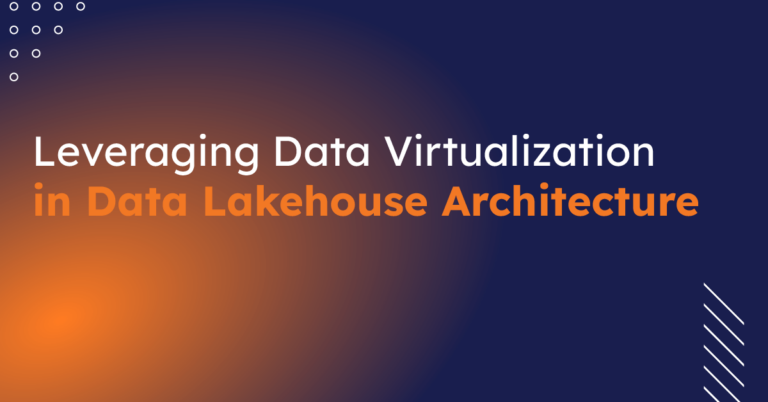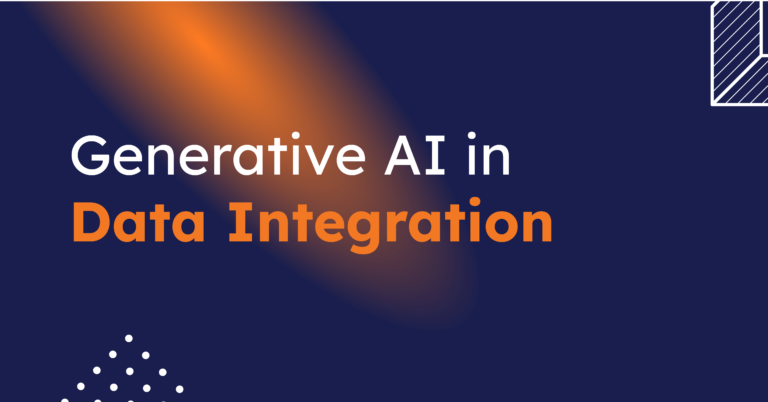
CData Software Acquires Data Virtuality to Modernize Data Virtualization for the Enterprise
Data Virtuality brings enterprise data virtualization capabilities to CData, delivering highly-performant access to live data at any scale.
Explore how you can use the Data Virtuality Platform in different scenarios.
Learn more about the Data Virtuality Platform or to make your work with Data Virtuality even more successful.
Insights on product updates, useful guides and further informative articles.
Find insightful webinars, whitepapers and ebooks in our resource library.
Stronger together. Learn more about our partner programs.
Read, watch and learn what our customers achieved with Data Virtuality.
In our documentation you will find everything to know about our products
Read the answers to frequently asked questions about Data Virtuality.
In this on-demand webinar, we look at how a modern data architecture can help data scientists to be faster and to work more efficiently.
Learn more about us as a company, our strong partner ecosystem and our career opportunities.
How we achieve data security and transparency
The integration of data warehouse automation within data virtualization might seem complex at first glance. In a data virtualization context, traditional views often question the relevance of conventional data warehouses. However, practical applications demonstrate a more integrative reality.
Real-world scenarios frequently require a blend of multiple integration styles, such as automated ETL processes, data virtualization, CDC, and streaming, particularly in use cases involving advanced data analytics. By automating critical tasks like data clean-up and REST API interactions within a data virtualization framework, we’re not just boosting productivity but also pioneering an efficient and streamlined data management solution. This approach addresses common data handling challenges, paving the way for a more agile and responsive data architecture, crucial for effective data governance in virtualization.
Data virtualization emerges as a vital solution in the landscape of data integration. This approach offers several significant advantages:
It leads to simplified access and reduces the complexity of integrating disparate data sources. And empowers data architects and their teams to rapidly prototype and test data sets before moving them into production environments, enhancing agility and flexibility in a dynamic business landscape.
However, data virtualization has its limitations, such as performance issues with large data sets and challenges in maintaining data historization. For a deeper understanding of these limitations, refer to our detailed blog post.
The perceived limitations of data virtualization, especially for analytical purposes, might suggest that it’s a flawed approach. However, this interpretation misses the bigger picture. The key is to balance the strengths and weaknesses of various data integration styles. This understanding is critical when designing your data architecture and selecting the most suitable solution for your needs.
In practical scenarios, the process typically begins with the exploration of new data sources. To ascertain if the correct data is being utilized, a synergistic approach of data virtualization and ETL proves to be invaluable. Initially, data virtualization facilitates the exploration and understanding of the data. Once the data has been thoroughly analyzed and optimized, ETL processes can then be developed and implemented to scale these insights effectively.
This is where data warehouse automation enters the picture as a crucial element. After ETL processes are established, data warehouse automation can further refine and boost productivity. By automating routine data tasks and optimizing data workflows, data warehouse automation introduces a significant efficiency upgrade, transforming the data processing and management landscape.
In conclusion, the strategic integration of data warehouse automation with data virtualization represents a significant advancement in managing and optimizing data workflows. As we’ve explored, this combination addresses the complexities of modern data environments, offering solutions that are both agile and efficient.
To truly understand the impact and capabilities of this integration, we invite you to experience it first-hand. Start a free 30 day trial of the Data Virtuality Platform and witness how data warehouse automation in a data virtualization context can revolutionize your data management processes. For a more in-depth exploration and tailored guidance, book a demo with us. Discover the transformative power of these technologies in enhancing your data architecture and driving your business forward.

Data Virtuality brings enterprise data virtualization capabilities to CData, delivering highly-performant access to live data at any scale.

Discover how our ChatGPT powered SQL AI Assistant can help Data Virtuality users boost their performance when working with data.

While caching offers certain advantages, it’s not a one-size-fits-all solution. To comprehensively meet business requirements, combining data virtualization with replication is key.

Explore the potential of Data Virtuality’s connector for Databricks, enhancing your data lakehouse experience with flexible integration.

Generative AI is an exciting new technology which is helping to democratise and accelerate data management tasks including data engineering.

Learn about the three-level performance optimization mechanism in the Data Virtuality Platform and how it can help you achieve maximum efficiency.
Leipzig
Katharinenstrasse 15 | 04109 | Germany
Munich
Trimburgstraße 2 | 81249 | Germany
San Francisco
2261 Market Street #4788 | CA 94114 | USA
Follow Us on Social Media
Our mission is to enable businesses to leverage the full potential of their data by providing a single source of truth platform to connect and manage all data.